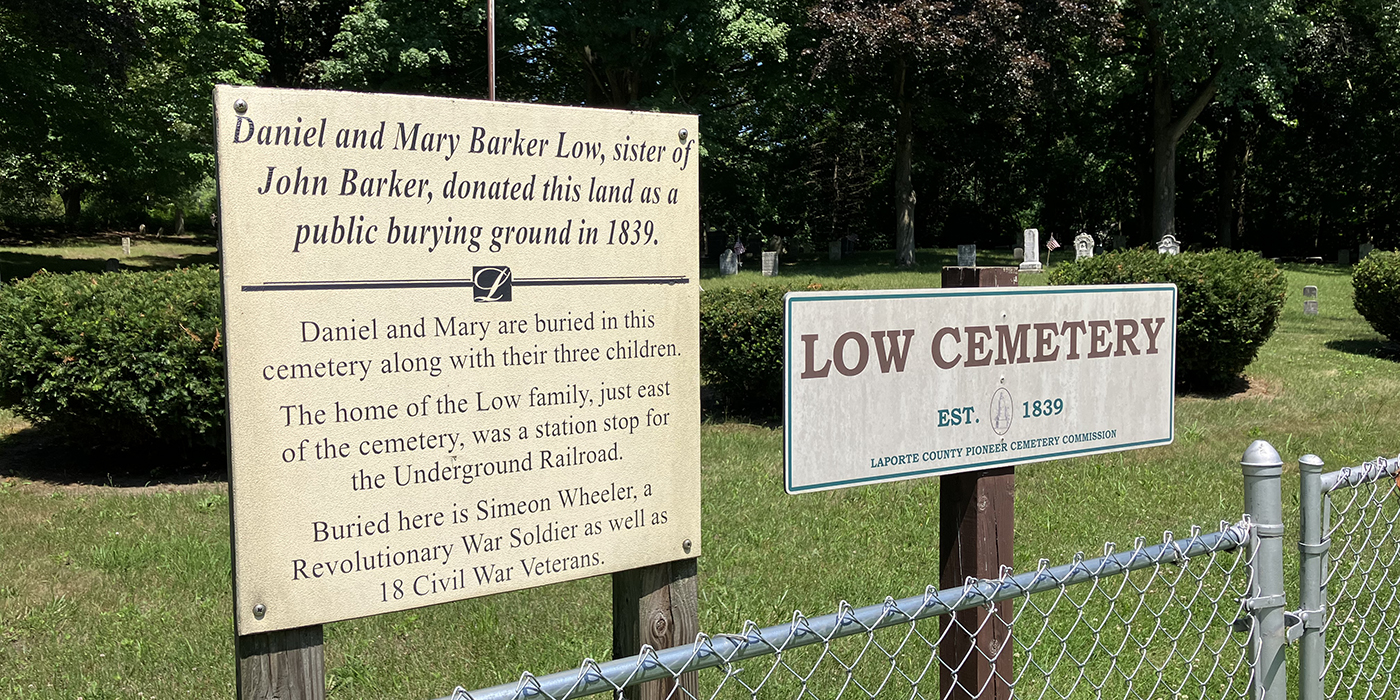NEWS
Tracing the Underground Railroad in Northwest Indiana
Indiana Landmarks is partnering with local history groups and regional organizations to identify Underground Railroad sites in The Region.

The Road to Freedom
Today, roads and rail lines transect northwest Indiana, transporting tons of commodities and enabling thousands of people to travel freely every day. Prior to the Civil War and in its aftermath, freedom seekers didn’t have the luxury of unfettered movement.
Despite slavery being outlawed in many northern states, freedom seekers and free Black people faced acts of violence, intimidation, imprisonment and (re)enslavement. The journey to freedom took courage, planning, persistence, and a trusted network, such as the Underground Railroad. Though it’s well known in eastern and southern states, the Underground Railroad remains less celebrated in Illinois and northern Indiana. Professor Larry McClellan, emeritus professor of Sociology and Community Studies at Governors State University, hopes to change this.
Supported by a $5,000 grant from Indiana Landmarks’ Black Heritage Preservation Program, McClellan is partnering with local history groups and regional organizations including Indiana Landmarks, the National Park Service, and the Calumet Heritage Partnership to research freedom seekers’ journeys and identify significant sites, eventually listing them on the National Park Service’s National Underground Railroad Network to Freedom.
McClellan has spent three decades documenting the Underground Railroad in northeast Illinois and northwest Indiana. According to his research, approximately 4,000 freedom seekers came to and through Chicago in the decades before the Civil War. While many freedom seekers stayed in Chicago, hundreds chose to continue through Northwest Indiana along a network of what is now known as the “Chicago-to-Detroit Freedom Trail” to find safety in Canada.
His research has documented the story of freedom seeker Caroline Quarlls, who escaped enslavement in St. Louis in 1843. She traveled to Milwaukee before being chased across the Midwest, stopping in LaPorte County, Indiana, on her way to Michigan and on to freedom in Canada.
Although there is evidence of an Underground Railroad network that included towns such as Dyer, Valparaiso, Westville, La Porte, and Michigan City in northwest Indiana, documentation is scarce, and confirmation is a challenge. Because they were breaking slavery laws, people sheltering slaves didn’t keep written accounts or artifacts. Researchers often have to rely on hearsay, or second and third-hand accounts such as letters, slave registries, legal documents, and court records.
You can learn more about McClellan’s research into northern Indiana’s Underground Railroad history at www.illinoisundergroundrailroad.info/little-calumet-river-ugrr/.
Stay up to date on the latest news, stories, and events from Indiana Landmarks, around the state or in your area.
